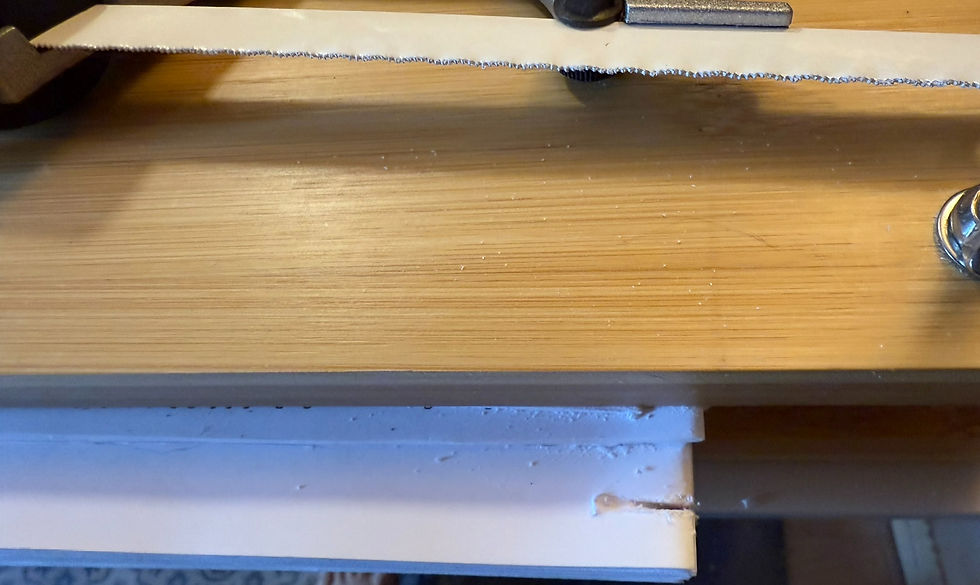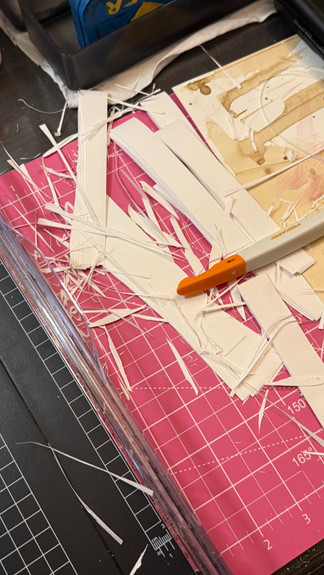Trimming the Signatures: to saw, cut, or slice.
- Zoffi Libélula
- Aug 22
- 2 min read
Updated: Aug 27
The Hacksaw
I started out using a hacksaw I'd bought thinking it might be the fastest method to trim my signatures to size. A quick Google search turned up no examples of anyone using this approach, so I decided to experiment before researching further.I
[Note: I may receive commission from any purchases resulting from the links below. I don't make this site as a source on income, though I hope to eventually break even on domain/website subscription costs :). If there are ways you would prefer I display these links, I am open to any feedback & criticism for more transparency]



I picked up a mini hacksaw hoping to shorten the time needed to trim pages. I expected it to leave rough‑edged pages — a texture I actually prefer.
After a brief but ambitious foray into hacksaw trimming, it was clear the packaging was right: paper cutting wasn’t on its list of uses. |

It was clear quickly that the package was very accurate in specifying the use of the saw - and paper cutting was not on the list. Before tearing into the actual text block, I checked what the more experienced bookbinders were doing -
There were two options available to me:
use sharp knife to trip signatures...slowly
or
use a paper cutter to trim the signatures...also slowly
Since the papers were already aligned in the press, I took my sharpest exacto knife and just sort of...went at it.
ACutting through the paper was satisfying, but doing the whole book at once had drawbacks. The cut developed a natural outward slant, leaving the last pages longer than the first.
So now was time for option 3: paper cutter. Slowly.
I trimmed each of the 64 (16 actually - I can't math - there are 4 pages of text per signature) signatures individually (having printed only the most interesting three‑quarters of the journal).

I’m happy with the result — especially the rough texture, unlike the perfect machine‑cut edges of store‑bought books. That’s not copeium; I’ll try for the “perfect” finish another time, possibly with sandpaper.
Two days later, step two was complete. Step one — printing in booklet format and folding each signature — remains unwritten, though it holds lessons worth sharing.
Next up: Choosing a stitch/binding style and making the cover.















Comments